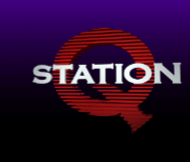


As any producer with feature film production experience knows, all the planning in the world can’t prepare you for everything that will go wrong during production.
Equipment will break, actors will forget to show up, props will disappear, and locations will suddenly become unavailable hours before your scheduled to be on the set. The key to maintaining your sanity through it all is to have a good understanding of the production process.
There’s a fundamental order in the film production universe, from the smallest low budget feature to the big budget Hollywood blockbuster. If you know the process, you’ll always know where you are and what lies ahead, and you’ll be prepared to deal with it all.
The production process is generally broken down into three sections: Pre Production (anything that happens before the camera is rolling,) Production, and Post Production (everything that happens after the production wraps and the camera gets put away.)
Because Q Station can provide all necessary production services in house, we have developed our own simplified process that we use for both client productions, and our own feature film productions.
Pre production covers everything that needs to happen before the camera begins to roll, and it all starts with the script. The script is the single most important part of your production. Everything from here on out will be based on your script.
Q Station will do a breakdown of your script to determine what the production team will need to produce it. Essentially, we will go through the script scene by scene and make lots of lists. Lists of which actors are in which scenes, lists of what props are needed, lists of which sets each scene uses, etc.
Once the breakdown has been done, we can begin plugging in the numbers to determine the project’s budget. The numbers we plug in will be largely determined by what your personal budget is for the project.
The same script could be produced with a budget of $25,000 or a budget of $1 Million, depending on how extravagant you want it to be. Of course, with a budget of $25,000 you won’t have any celebrity actors, exotic locations, or destructive car chases, but that doesn’t mean you can’t still make a quality product.
Can it be produced for less? Absolutely, but there are some things you'll have to give up to make it work. When you're ready to get started, we'll work with you to figure out how to make the script fit your budget.
Q Station will help you put together a casting call sheet and circulate it to the various talent agencies and on-line talent databases. Then, we’ll collect head shots and resumes of any interested actors and pass them along for your review.
Once you narrow down the selection to those actors you’d like to audition, we will prepare an audition schedule and notify the actors you’ve selected. If you wish, a member of our production team can be present at the audition to help guide the process.
Once your talent has been selected, Q Station will prepare and forward an Actor’s Employment Agreement for each actor to review and return.
We will work with you to find and secure locations appropriate for your script. Once a potential location is found, Q Station will attempt to contact the owner and secure a location agreement granting the production team permission to film at their location.
Once the cast and locations have been secured, it is time to secure the rest of the crew. Q Station will provide personnel to cover several key crew positions such as DP, camera operator, gaffer, and key grip, but there will be additional crew members needed on the set. In many cases, production assistants from local film schools or family friends can fill the additional positions.
Once we have assembled the appropriate crew, Q Station will provide Crew Employment Agreements, which you’ll need when it comes time to find a distributor for your finished film.
The final step before you begin production is to gather together all of the various props, wardrobe and set decoration you’ll need in the film. This includes any vehicles you may need.
The actual production of your project, also known as “Principal Photography” is a pretty straight forward process.
For the next three to five weeks you’ll spend 10 hours a day, five to six days a week with your new ‘family’. You will live, eat, sleep and breathe your film, and Q Station will be there to make sure that everything runs smoothly.
We’ll arrive at each location with all of the equipment and crew and will set up the staging area. Shortly after, the talent will arrive and get into makeup and wardrobe and shooting will begin based on the pre-determined shooting schedule.
After about four hours, the cast and crew will break for a catered meal.
Once all of the shots for that day have been completed, we’ll break down and pack all of the equipment and dismiss the crew for the evening. The process will repeat each day, moving from location to location as outlined in the shooting schedule until every scene is shot and the production wraps.
The post production process includes everything that needs to be accomplished after principal photography is completed, including editing, color correction, ADR, music scoring and more.
The first step in the post production process is editing. All of the footage acquired during principal photography is ingested into our non-linear Final Cut Pro editing system and prepared for editing. Our team will work closely with you to cut the film, gradually refining it until it reaches it’s final form, often referred to as “picture lock” or “PicLock”.
Using Final Cut Pro’s powerful color correction tools, we will go through process each shot in the film to maximize it’s contrast range, correct for any inconsistencies between shots in a scene, and achieve the desired aesthetic look for each scene. A proof DVD will then be created with a Time Code burn for use during the rest of the post production process.
A music spotting session will be held at Q Station’s studio with the music composer, sound engineer, and director. The film will be screened and ideas for music placement will be discussed. The composer will create a cue sheet listing all of the time code points where music should be inserted and noting the time code location of any key musical hits.
All of the source audio will be transferred into Q Station’s Pro Tools system. A dialog editor will then separate and clean up all of the dialog in the film to determine what, if any will need to be replaced in ADR. If ADR is needed, the dialog editor will take the recorded ADR tracks and mix them together with the original source tracks to create the finished dialog track.
Unless you are recording on a sound stage, you will often find that a good portion of the dialog recorded on location will need to be replaced with ADR. During this process, the actors come into the studio one at a time and re-record the dialog. They accomplish this by watching the scene they are replacing on a monitor and reading along with themselves while listening to the original source track.
Similar to ADR, Foley is the process of recording the various sound effects to be included in the final mix. A foley artist acts out the scene as it appears on the screen to recreate the sounds of footsteps, clothing rustling, etc. In some cases, sound effects can be selected and added from our extensive sound effects library.
Once the score is complete, Q Station will arrange to produce and record the soundtrack in our studio. When budget will allow, live musicians will be brought in to record the various parts of the score. For restricted budgets, the score will be recorded with a combination of live musicians and midi instruments, or entirely with midi instruments.
After all of the elements have been recorded, we will prepare the project for the final sound mix. At this stage, all of the dialog, sound effects, and music tracks will be mixed together to form the completed soundtrack using THX certified equipment. Depending on your intended use for the project, the final mix can either be in stereo or 5.1 surround.
Q Station will compress and master a DVD of the finished project which you can then duplicate yourself, or send to a DVD manufacturing plant for replication.
Home
| About Us | Film/Cinema
| Advertising | Samples
| Investors
Contact Us | e-Store
Copyright
© 2007, Q Station
www.q-station.com
|
|
|
|
|
|
|
|
|
|
 |
 |
|
|
|||||
| |
|
|
||||||
|
|
|
|||||||
| |
|
|
|
|
|
|||
|
|
||||||||
| |
|
|||||||
|
|
||||||||
|
|
||||||||
|
|
||||||||
|
|
||||||||
|
|
||||||||
|
|
||||||||
|
|
|
|||||||
|
|
|
|||||||
|
|
|
|||||||
|
|
|
|||||||
 |
|
|||||||